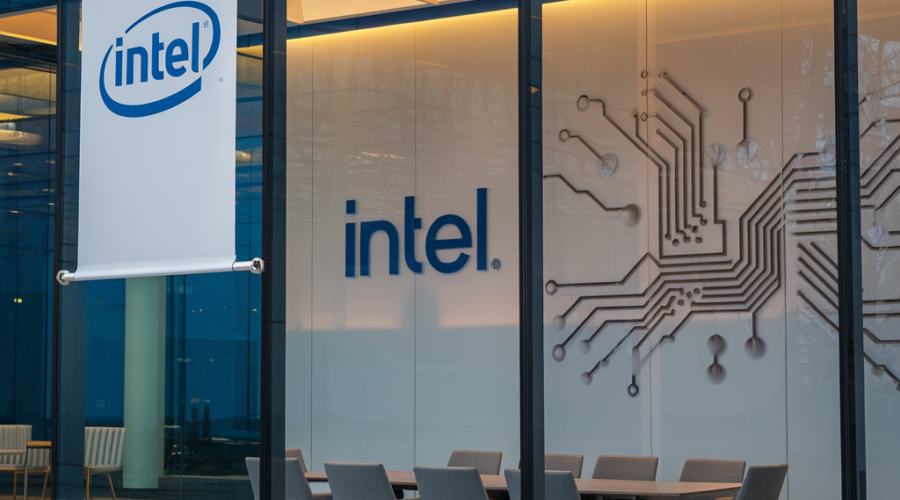In a landmark move signaling Intel’s aggressive restructuring, the chipmaker announced the sale of a 51% stake in its Altera FPGA business to private equity firm Silver Lake for $8.75 billion[1][3][6]. The transaction, expected to close in late 2025 pending regulatory approvals, creates the semiconductor sector’s largest pure-play FPGA company while enabling Intel to sharpen focus on core processor manufacturing and foundry ambitions. The deal’s structure – maintaining 49% ownership while transferring operational control – reflects a calculated gamble to balance immediate liquidity needs with long-term exposure to FPGA market growth projected to reach $25.8 billion by 2029[8].
Deal Architecture and Immediate Impacts
Financial Engineering for a Transitional Era
The $4.375 billion cash infusion arrives as Intel confronts dual challenges: financing its $20 billion+ Ohio and Arizona fab expansions[7] while offsetting Altera’s $615 million 2024 GAAP operating loss[1][6]. By retaining minority ownership, Intel preserves optionality should Altera’s independence drive valuation growth beyond the 48% premium to its 2015 acquisition price[3][5]. Silver Lake’s involvement brings operational expertise from turnarounds like Dell and VMware, suggesting aggressive cost optimization ahead for Altera[7].
Leadership Realignment and Strategic Autonomy
The CEO transition from Sandra Rivera to Raghib Hussain effective May 5, 2025, installs a Marvell veteran with proven success in networking semiconductors[1][5]. Hussain’s mandate likely includes accelerating Altera’s Agilex FPGA roadmap, which recently launched the power-efficient Agilex 3 series targeting AI edge applications[5]. Operational independence removes product development constraints from Intel’s internal priorities, potentially enabling faster time-to-market against Xilinx/AMD and Lattice Semiconductor.
Strategic Rationale and Industry Implications
Intel’s Great Unbundling
CEO Lip-Bu Tan’s “slimmer, more focused Intel” vision[2][6] gains momentum through this divestiture, following workforce reductions (15% in 2024)[4] and European fab scalebacks[7]. The move completes Altera’s transition from 2015 acquisition target to independent entity – a reversal of the vertical integration strategy under former CEO Brian Krzanich[3][5]. Remaining FPGA partnerships through Intel Foundry Services could test the new arm’s-length relationship.
FPGA Market Dynamics Post-Spinout
As hyperscalers increasingly adopt FPGAs for AI inference and networking, Altera’s independence allows direct customer engagement without Intel’s product conflicts. Silver Lake’s resources may fuel R&D to close the performance gap with AMD’s Xilinx, particularly in 5G infrastructure and autonomous systems. However, the $1.54 billion 2024 revenue[1][6] suggests Altera remains subscale compared to its $8.75 billion valuation, demanding rapid top-line growth to justify private equity returns.
Financial Engineering and Market Reactions
Balance Sheet Mechanics
The transaction’s $8.75 billion enterprise value represents 5.7x 2024 revenue – a premium to comparable semiconductor deals, justified by FPGA’s 9.6% CAGR[8]. Intel’s 49% stake creates a $4.29 billion asset that could be monetized via IPO or secondary sale post-turnaround. Immediate cash use will likely target debt reduction (Intel’s $48 billion gross debt as of Q4 2024) and foundry capex rather than shareholder returns[6].
Investor Sentiment and Valuation Impact
Intel’s 3.9% premarket stock jump[6] reflects approval of Tan’s restructuring, though challenges persist. The Altera sale removes a drag on non-GAAP margins (35% of PSG’s 2024 revenue carried 40% gross margin)[5], potentially adding 200-300bps to Intel’s consolidated profitability. However, Silver Lake’s majority control limits Intel’s ability to consolidate future Altera innovations into its AI/cloud roadmap.
Competitive Landscape Reshuffled
New Battlegrounds in Programmable Logic
With $121 billion in assets under management[7], Silver Lake can fund Altera’s catch-up R&D against AMD/Xilinx’s 60% market share. Expect intensified competition in three areas: AI-optimized FPGAs for data center inference, low-power edge solutions matching Lattice’s dominance, and chiplets integration combining FPGA fabric with custom ASICs. Altera’s Agilex 3 launch[5] provides a foundation, but requires accelerated iteration cycles under private ownership.
Foundry Wars and Supply Chain Implications
The deal complicates Intel’s foundry ambitions, as Altera accounted for 12% of IFS’s 2024 design wins[5]. While Altera may continue using Intel 18A nodes for advanced FPGAs, Silver Lake could diversify production to TSMC or Samsung – a strategic setback for Intel’s internal capacity utilization. Conversely, independence allows Altera to act as a neutral supplier to cloud providers wary of Intel’s competing Habana AI chips.
Roadmap Risks and Opportunities
Execution Challenges in Transition
Operational disentanglement poses near-term risks: separating Altera’s 5,000+ employees[1], IT systems, and IP portfolios without disrupting product cycles. Cultural clashes may emerge between Silver Lake’s return-driven approach and Altera’s engineering ethos. Huawei’s recent FPGA design wins suggest Chinese competitors could exploit any transition missteps.
Long-Term Strategic Optionality
For Intel, the deal creates a template for future divestitures (Mobileye, IMS Nanofabrication) while preserving architectural influence through board seats. Altera’s success as an independent could validate FPGA specialization over integration – a model AMD rejected with Xilinx. Market observers should monitor whether Silver Lake pursues complementary acquisitions (e.g., Achronix) to build an FPGA conglomerate.
Conclusion: A Bellwether for Semiconductor Strategy
Intel’s partial retreat from FPGA markets underscores the untenable nature of diversified semiconductor conglomerates in the AI era. For Silver Lake, the deal tests whether private equity’s operational playbook can disrupt technology sectors traditionally driven by scale and R&D continuity. As Altera charts its independent course under Hussain, the transaction’s ultimate success will hinge on converting FPGA’s theoretical growth into sustainable profits – a challenge requiring both financial discipline and technical brilliance. For the industry, it signals intensified competition in programmable logic, with implications spanning cloud infrastructure, 6G networks, and autonomous systems.
Sources
https://evertiq.com/design/2025-04-14-intel-sells-majority-stake-in-altera-to-silver-lake, https://overclock3d.net/news/misc/intel-sells-majority-stake-in-altera-as-company-shifts-its-focus/, https://www.calcalistech.com/ctechnews/article/syug00y9rkx, https://www.mobileworldlive.com/intel/intel-mulls-altera-stake-sale/, https://www.datacenterdynamics.com/en/news/intel-sells-51-stake-in-altera-to-silver-lake-for-875bn/, https://www.xtb.com/en/market-analysis/intel-to-sell-majority-stake-in-altera-to-silver-lake-for-8-75-billion, https://www.capacitymedia.com/article/2efz3dl12jub4ao5nfx1c/news/article-intel-looks-to-offload-altera-to-silver-lake-in-multi-billion-dollar-deal-report, https://techcrunch.com/2025/04/14/intel-agrees-to-sell-controlling-stake-in-altera-chip-business/





